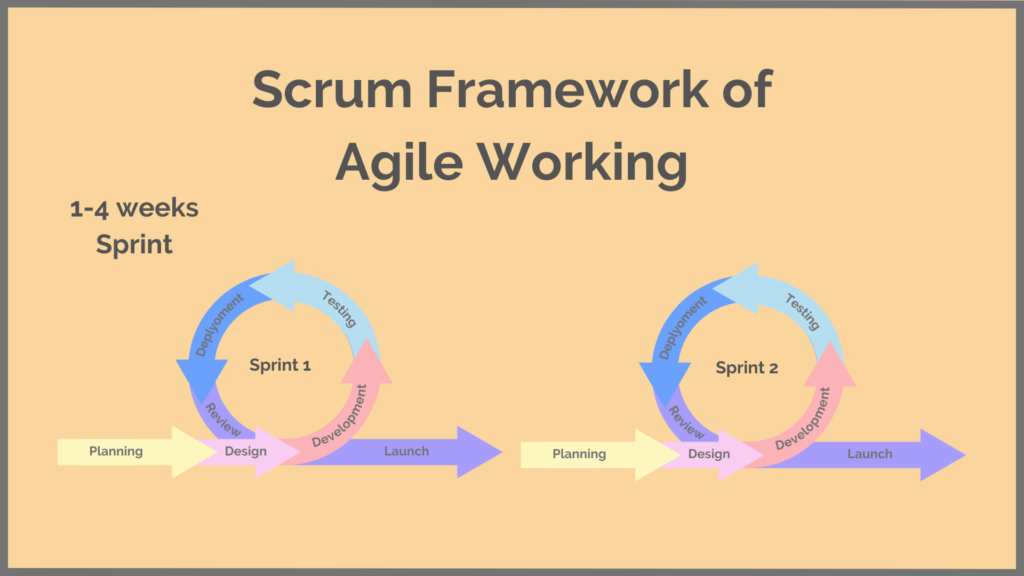
Medical device manufacturers are required by the MDR/IVDR to monitor the safety of their products even after they have been approved and have entered the market. This process is called Post-Market Surveillance (PMS) or Post-Marketing Surveillance. Due to the considerable amount of work involved, it can be advantageous to outsource this process to other companies. Existing personnel resources, costs, and time for hiring and training new personnel can be saved by outsourcing and newly gained capacities can be invested in other activities.
Agile working according to Scrum is a method that is often used in IT companies. It is associated with more flexibility, productivity, and better communication. At tracekey, we also work according to this principle. But how do Post-Marketing Surveillance and agile working fit together? In the following article, we take a PMS system as an example of the development process of a product in an agile company. But before that, we will introduce Post-Market Surveillance and agile working in more detail.
Post-Market Surveillance in MedTech
Medical device manufacturers must continue to monitor medical devices that have already undergone clinical trials even after they have been approved and placed on the market. Since clinical trials take place under defined conditions, they often do not fully reflect the benefit/risk ratio of the products under investigation. The PMS department has the task of discovering adverse events, evaluating them, and warding them off. Customer complaints, electronic health records, questionnaires, or databases of scientific literature, for example, can serve as the basis for research here. This information is summarized in reports and, depending on its importance, it leads to a series of measures up to and including product recalls.
Origin of Agile Working
Agile working originally comes from the field of software development, where this approach was formulated at the beginning of the Internet age. Due to its fast pace, the Internet demanded a more flexible approach to the development of new software. Previously, the waterfall model with six successive phases represented the usual workflow for project management:
- analysis of requirements
- design creation
- development
- testing
- deployment
- maintenance
Here, for example, extensive documentation received more attention than a functioning product. This changed with agile working. Further, in this system, following a plan and negotiating with customers was preferred over collaborating with them and responding to changes. While the waterfall model was able to create structure in software development before the ubiquity of the Internet, it is often too inflexible for today’s requirements. After all, the software requires regular updates, needs support, and should be continuously improved. Optimal conditions for the development and maintenance of such a system are offered by an agile way of working.
What is Agile Working?
The goal is to focus on flexibility, collaboration, and continuous improvement. Instead of thinking in terms of multi-year periods, agile working creates shorter intervals. The chronological structure of the waterfall model has also been replaced and corresponds to a cycle now:

With this methodology, it is not necessary to have all the answers to all possible questions from the beginning, as with the waterfall model. Instead, a main goal is broken down into individual, smaller goals called sprints, which then can be tested. Another component of agile working is a decentralized approach to organizational structure. Communication and productivity should be improved by having teams work collaboratively and without hierarchies. A sense of responsibility and achievement within teams can thus be increased. However, this method is not exclusive to software development but it also finding applications in other areas.
Agile meets Post-Market Surveillance
Compliance requirements for manufacturers change frequently. Be it countries adapting their regulations for medical devices or even introducing new ones. It is not unlikely for PMS guidelines to be affected by changes. If you want to set up a software-based Post-Marketing Surveillance system, it is advantageous to approach this task with an agile framework. With a high number of unknown variables, the sprint format helps to quickly adapt to changes. Agile working is especially useful for new projects. Due to the short iterations, findings can be quickly picked up and incorporated into future planning. Even if regulations change during planning, they can be easily implemented in the next sprint. Due to the given flexibility, even such a complex topic as Post-Market Surveillance can be tackled efficiently by an agile company.